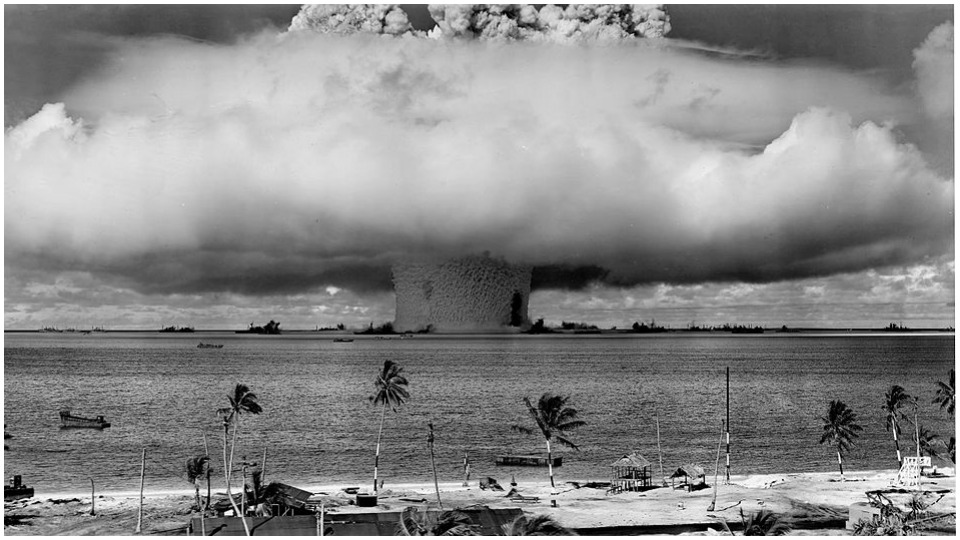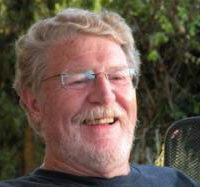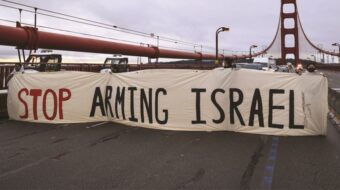
When Turkish President Recep Tayyip Erdoğan told an economic meeting in the city of Sivas on Sept. 4 that Turkey was considering building nuclear weapons, he was responding to a broken promise.
When Israeli Prime Minister Benjamin Netanyahu accused the government of Iran of lying about its nuclear program, he was concealing one of the greatest subterfuges in the history of nuclear weapons.
And the vast majority of Americans haven’t a clue about either.
Early in the morning of Sept. 22, 1979, a U.S. satellite recorded a double flash near the Prince Edward islands in the South Atlantic. The satellite, a Vela 5B, carries a device called a “bhangmeter” whose purpose is to detect nuclear explosions. Sent into orbit following the signing of the Partial Test Ban Treaty in 1963, its job was to monitor any violations of the agreement. The Treaty banned nuclear explosions in the atmosphere, underwater, and in space.
Nuclear explosions have a unique footprint. When the weapon detonates, it sends out an initial pulse of light, but as the fireball expands, it cools down for a few milliseconds, then spikes again.
“Nothing in nature produces such a double-humped light flash,” says Victor Gilinsky. “The spacing of the hump gives an indication of the amount of energy, or yield, released by the explosion.” Gilinsky was a member of the U.S. Nuclear Regulatory Commission and a former Rand Corporation physicist.
There was little question who had conducted the test. The Prince Edward islands were owned by South Africa, and U.S. intelligence knew the apartheid government was conducting research into nuclear weapons, but had yet to produce one. But Israel had nukes, and both countries had close military ties. In short, it was almost certainly an Israeli weapon, though Israel denied it.

In the weeks that followed, clear evidence for a nuclear test emerged from hydrophones near Ascension Island and a jump in radioactive iodine-131 in Australian sheep. Only nuclear explosions produce iodine-131.
Nuclear lies
But the test came at a bad time for U.S. President Jimmy Carter, who was gearing up his re-election campaign, a cornerstone of which was a peace agreement between Israel and Egypt.
If the Israelis were seen to have violated the Partial Test Ban, as well as the 1977 Glenn Amendment to the Arms Export Control Act, the U.S. would have been required to cut off all arms sales to Israel and apply heavy sanctions. Carter was nervous about what such a finding would have on the election, since a major part of Carter’s platform was arms control and non-proliferation.
So Carter threw together a panel of experts whose job was not to examine the incident but to cover it up. The Ruina Panel cooked up a tortured explanation involving mini-meteors that the media accepted and, as a result, so did the American public.
But nuclear physicists knew the panel was blowing smoke and that the evidence was unarguable. The device was set off on a barge between Prince Edward Island and Marion Island (the former should not be confused with Canada’s Prince Edward Island) with a yield of from 3 to 4 kilotons. A secret CIA panel concurred but put the yield at 1.5 to 2 kilotons. For comparison, the Hiroshima bomb was 15 kilotons.
It was also clear why the Israelis took the risk. Israel had a number of Hiroshima-style fission bombs but was working on producing a thermonuclear weapon—a hydrogen bomb. Fission bombs are easy to use, but fusion weapons are tricky and require a test. That the Vela picked it up was pure chance, since the satellite had been retired. But its bhangmeters were still working.
From Carter on, every U.S. president has covered up the Israeli violation of the 1963 Partial Test Ban Treaty, as well as the 1968 Nuclear Non-Proliferation Treaty (NPT). So when Netanyahu says Iran is lying about its nuclear program, much of the rest of the world, including the U.S. nuclear establishment, rolls their eyes.
Broken promises
As for Turkish President Erdoğan, he is perfectly correct that the nuclear powers have broken the promise they made back in 1968 when the signed the NPT. Article VI of that agreement calls for an end to the nuclear arms race and the abolition of nuclear weapons. Indeed, in many ways Article VI is the heart of the NPT. Non-nuclear armed countries signed the agreement, only to find themselves locked into a system of “nuclear apartheid,” where they agreed not to acquire such weapons of mass destruction, while China, Russia, Great Britain, France, and the U.S. get to keep theirs.
The “Big Five” not only kept their weapons; they are all in the process of upgrading and expanding them. The U.S. is also shedding other agreements, like the Anti-Ballistic Missile Treaty and the Intermediate-Range Nuclear Force Agreement. Washington is also getting ready to abandon the START treaty that limits the U.S. and Russia to a set number of warheads and long-range strategic launchers.
What is amazing is that only four other countries have abandoned the NPT: Israel, North Korea, Pakistan, and India (only the latter three have been sanctioned by the U.S.). But that situation cannot hold forever, especially since part of Article VI calls for general disarmament, a pledge that has been honored in the breach. The U.S. currently has the largest defense budget in its history and spends about 47% of what the entire rest of the world spends on their militaries.
While the U.S. doesn’t seem able to win wars with that huge military—Afghanistan and Iraq were disasters—it can inflict a stunning amount of damage that few countries are willing to absorb. Even when Washington doesn’t resort to its military, its sanctions can decimate a country’s economy and impoverish its citizens. North Korea and Iran are cases in point.
If the U.S. was willing to cover up the 1979 Israeli test, while sanctioning other countries that acquire nuclear weapons, why would anyone think that this is nothing more than hypocrisy on the subject of proliferation? And if the NPT is simply a device to ensure that other countries cannot defend themselves from other nations’ conventional and/or nuclear forces, why would anyone sign on or stay in the Treaty?
Turkish President Erdoğan may be bluffing. He loves bombast and effectively uses it to keep his foes off balance. The threat may be a strategy for getting the U.S. to back off on its support for Israel and Greece in their joint efforts to develop energy sources in the eastern Mediterranean Sea.
But Turkey also has security concerns. In his speech, Erdoğan pointed out: “There is Israel just beside us. Do they have [nuclear weapons]? They do.” He went on to say that if Turkey did not response to Israeli “bullying,” in the region, “We will face the prospect of losing our strategic superiority in the region.”

Iran may be lying—although though there is no evidence that Tehran is making a serious run at producing a nuclear weapon—but if they are, they are in good company with the Americans and the Israelis.
Sooner or later, someone is going to set off one of those nukes. The likeliest candidates are India and Pakistan, although use by the U.S. and China in the South China Sea is not out of the question. Neither is a dustup between NATO and Russia in the Baltic.
It is easy to blame the current resident of the White House for world tensions, except that the major nuclear powers have been ignoring their commitments on nuclear weapons and disarmament for over 50 years.
Returning to sanity
The path back to sanity is thorny but not impossible:
One: re-join the Anti-Ballistic Missile Treaty, thus making Russia’s medium-range missiles unnecessary, and reduce tensions between the U.S. and China by withdrawing ABM systems from Japan and South Korea.
Two: re-instate the Intermediate-Range Nuclear Force Agreement and find a way to bring China, India, and Pakistan into it. That will require a general reduction of U.S. military forces in Asia coupled with an agreement with China to back off on its claims over most of the South China Sea. Tensions between India and Pakistan would be greatly reduced by simply fulfilling the UN pledge to hold a referendum in Kashmir. The latter would almost certainly vote for independence.
Three: continue adherence to the START Treaty but halt the modernization of the Big Five’s nuclear weapons arsenals and begin to implement Article VI of the NPT in regards to both nuclear and conventional forces.
Pie in the sky? Well, if we don’t make these moves we might not be around for the worst part of climate change.
Conn Hallinan can be read at dispatchesfromtheedgeblog.wordpress.com.












Comments